อัพเดทล่าสุด 17 ส.ค. 2564 13:18:22 น. เข้าชม 264 ครั้ง
|
|
ABS GA800, เอบีเอส, ABS, เม็ดเอบีเอส,
Acrylonitrile butadiene styrene, อะคริโลไนไตรล์บิวทาไดอีนสไตรีน
พลาสติกวิศวกรรม,
เม็ดพลาสติกวิศวกรรม, เอบีเอสโคพอลีแมอร์, ABS
copolymer, Engineering Plastic
นำเข้า ส่งออก และจัดจำหน่าย โดย
บจก.ไทยโพลีเคมิคอล
สามารถสอบถามข้อมูลเพิ่มเติมได้ที่ ฝ่ายขายและการตลาด
บจก.ไทยโพลีเคมิคอล
36/1
หมู่ที่ 9
ตำบลนาดี อำเภอเมืองสมุทรสาคร จังหวัดสมุทรสาคร 74000
โทร 034496284, 034854888, 0861762992, 0824504888, 0868850111
อีเมลล์แอดเดรส polychemicals888 (at)
gmail (dot) com, LINE ID: wuttpcc
POLY
CHEMICALS FOR A BETTER LIFE, คุณภาพเคมีภัณฑ์
สร้างสรรค์คุณภาพชีวิต
TAG: ABS
GA800, เอบีเอส, ABS, เม็ดเอบีเอส, เม็ดพลาสติกเอบีเอส
Acrylonitrile butadiene
styrene, อะคริโลไนไตรล์บิวทาไดอีนสไตรีน
Keyword: ABS, ABS GA800, ABS
resin, ABS pellet, Plastic ABS, ABS plastic, Polymer ABS, ABS polymer, ABS
powder, Powdered ABS, ABS copolymer, Acrylonitrile-butadiene-styrene, Acrylonitrile
butadiene styrene, ABS จีเอ 800, เอบีเอส
จีเอ 800, เม็ดพลาสติก เอบีเอส, เม็ดเอบีเอส,
เอบีเอสเม็ด, ผงเอบีเอส, เอบีเอสผง,
เอบีเอสเรซิ่น, เรซิ่นเอบีเอส, ผลิตเอบีเอส, จำหน่ายเอบีเอส,
นำเข้าเอบีเอส,
ส่งออกเอบีเอส, เอบีเอส โคโพลีเมอร์, เอบีเอส
โคพอลิเมอร์,
เอบีเอสโพลีเมอร์,
เอบีเอสพอลีเมอร์, อะคริโลไนไตรล์บิวทาไดอีนสไตรีน, อะคริโลไนไตรล์บิวตะไดอีนสไตรีน
รายละเอียดสินค้า เอบีเอส, เม็ดเอบีเอส,
เม็ดพลาสติกเอบีเอส, ABS
คำว่า เอบีเอส (ABS) ย่อมาจาก อะคริโลไนไตรล์-บิวทาไดอีน-สไตรีน
(acrylonitrile-butadiene-styrene) ซึ่งเป็นเทอร์โมพลาสติกชนิดหนึ่ง ถูกใช้งานเป็นส่วนประกอบในของใช้หลากหลายชนิด
พลาสติกทั่วไปจะมีลักษณะแข็งแต่เปราะแตกหักง่าย หรือถ้ามีลักษณะแข็งเหนียวก็จะมีลักษณะอ่อนนิ่มไม่อยู่ทรง
แต่พลาสติก ABS แตกต่างจากพลาสติกทั่วไปเพราะเป็นพลาสติกที่มีความสมดุลทั้งในเรื่องความแข็งและความเหนียว
สามารถคงสภาพรูปร่างได้ดี ทำให้มีคุณสมบัติทนทานต่อแรงกระแทกได้ดี และยังทนต่อแรงเสียดสี
ความร้อน สารเคมีได้ดีกว่าพลาสติกธรรมดาทั่วไป มีช่วงอุณหภูมิที่สามารถใช้งานได้กว้างนั่นคือ
-20 องศาเซลเซียสถึง
80 องศาเซลเซียส
โครงสร้างของพลาสติก ABS, พลาสติก ABS ผลิตมาจากการทำปฏิกิริยาของโมโนเมอร์
3 ชนิดคือ สไตรีน
(styrene), อะคริโลไนไตรล์
(acrylonitrile) และโพลิบิวทาไดอีน (polybutadiene) ซึ่งโมโนเมอร์ทั้ง 3 ชนิดล้วนส่งผลต่อคุณสมบัติของพลาสติก ABS โดยอะคริไลไนโตรล์ช่วยให้ทนความร้อนและสารเคมี
บิวทาไดอีนช่วยให้มีความทนทานต่อแรงกระทบกระแทก ส่วนสไตรีนช่วยให้เนื้อพลาสติกมีพื้นผิวเป็นมันเงาสวยงาม
และสามารถตัดแต่งรูปทรงได้ง่าย ผู้ผลิตพลาสติก ABS จึงสามารถปรับเปลี่ยนสัดส่วนของโมโนเมอร์ทั้ง 3 ชนิดเพื่อให้พลาสติก ABS ที่ผลิตมีคุณสมบัติตามที่ต้องการ
การนำไปประยุกต์ใชงาน ABS, ในอุตสาหกรรมรถยนต์
พลาสติกที่จะนำมาใช้จะต้องมีมาตรฐานคุณภาพสูง โดยจะต้องคงสภาพรูปร่างได้ดีไม่โค้งงอหรือบิดตัวเมื่ออยู่ในสภาวะที่มีความเค้น
หรืออุุณหภูมิที่เปลี่ยนแปลงไปมามาก ซึ่งพลาสติก ABS มีคุณสมบัติที่ทนต่อสภาพดังกล่าวได้สูงจึงเหมาะกับการใช้เป็นชิ้นส่วนในรถยนต์
สำหรับอุตสาหกรรมผลิตเครื่องใช้ไฟฟ้าและอุปกรณ์อิเล็กทรอนิกส์ จะใช้พลาสติก ABS เป็นโครงภายนอกของเครื่องใช้ไฟฟ้า เนื่องจากมีความแข็งแรง
ทนต่อการขีดข่วนเสียดสีเวลาใช้งาน และยังมีความสวยงามสามารถทำความสะอาดได้ง่าย อุตสาหกรรมอื่นๆ
เช่น ใช้ผลิตอุปกรณ์กีฬา, ท่อส่งก๊าซ, หมวกกันน็อก, โทรศัพท์มือถือ, ไมโครโฟน เป็นต้น
Acrylonitrile Butadiene Styrene
(ABS) is a terpolymer, or a polymer composed of three different monomers. This
amorphous blend is made up of acrylonitrile, butadiene, and styrene in varying
proportions. Each one of these monomers serve to impart an advantage to ABS:
acrylonitrile provides chemical and thermal stability, butadiene increase
toughness and impact strength, and styrene gives the plastic a nice and glossy
finish. Variations in the relative proportions of each monomer can result in
drastic changes in the physical properties of ABS. The proportions of
individual monomers may vary from 15 percent to 35 percent acrylonitrile, 40 percent to 60 percent styrene, and 5 percent to 30 percent butadiene, resulting in a variety of plastic products
suitable for different applications. In addition, blends with other materials
such as polyvinylchloride (PVC) and other polycarbonates and polysulfonates
have been developed. The discovery of ABS started with the desire to improve on
the synthetic rubber styrene-butadiene (SBR). ABS plastics became widely
available in the 1950s. The variability of its copolymers
and ease of processing made ABS one of the most popular engineering polymers.
ABS is one of the most widely used and versatile thermoplastics due to its
superior hardness, toughness, gloss, and electrical and chemical resistance. As
a ‘bridge’ polymer whose properties lie between commodity plastics and high
performance engineering thermoplastics, ABS has become the largest selling
engineering thermoplastic. ABS, also known as Acrylonitrile Butadiene Styrene,
is a polymer that is composed of three different monomers. These components are
acrylonitrile, butadiene, and styrene. The overall property of ABS plastic
depends on the constituent proportion of the monomers. Each monomer is
responsible for certain properties.
Acrylonitrile provides chemical
and thermal stability.
Butadiene is responsible for
increasing the toughness and impact strength
Styrene is the component that
gives the plastic a nice and glossy finish.
An ABS plastic is manufactured
using an emulsion process which involves the three components which are
Acrylonitrile Butadiene and Styrene. When these monomers are put together, acrylonitrile
develops a polar attraction with other molecules, thus making the polymer
tough. Also, in the presence of butadiene, physical strength is added to the
plastic thanks to a process commonly known as rubber toughening (Butadiene is
actually rubber and not plastic). This process and method are commonly used for
manufacturing ABS plastics; however, the proportion of the monomers can vary.
By adding more Acrylonitrile for example the plastic will be stronger and
tougher.
Main Applications for ABS plastics
ABS Plastics are extremely common
and are used in various fields and domains such as:
Auto industry: large numbers of
automobile parts are made out of either ABS Plastics or ABS alloys such as the
Passat for example. The company Volkswagen uses around 11
KG of ABS plastics per vehicle. Not only that, other car manufacturers use ABS
plastics to make decorative parts due to the glossy and shiny looks of the ABS
plastics.
Household appliances: ABS
plastics are used in everyday products such as kitchen utensils, printers,
cleaners, computers, faxes, the shell of telephones, Musical instruments and
many more.
ABS plastics are used in a wide
range of applications thanks to the many benefits and advantages they have.
Advantages and disadvantages if
ABS Plastics
Advantages of ABS Plastics
ABS is thermoplastic; that means
it can be heated and cooled more than once, thus making ABS products
recyclable.
ABS plastics have a high impact
resistance.
ABS plastics have a high chemical
resistance making them safe to use.
ABS products are considered to be
great electrical insulants.
ABS plastics are easy to paint
and glue.
ABS plastics are great at
absorbing shock.
ABS plastics usually don’t cost
much making them affordable for small companies.
ABS products are great at resisting
heat and scratches.
ABS plastics have excellent
ductility.
Since ABS plastic is easily
manufactured, glued and painted it can be used in 3D
printing and prototyping.
Limitations of ABS Plastics
Even though ABS plastic has lots
of advantages and benefits that make it unique from the rest of the plastic
materials; however, this does not mean that they are perfect. ABS plastics do
actually have challenges and limitations such as:
Despite their high heat
resistance, when exposed to an extremely high temperature such as an open fire,
ABS may burst into intense flames.
ABS plastics are organic
materials; therefore, when they are combusted, they will produce carbon
monoxide and hydrogen cyanide which are considered to be toxic products.
ABS material can be damaged when
exposed to sunlight for a long time.
Even though ABS may be considered
to be a safe material, its use is actually limited when it comes to the food
industry.
นอกจาก อะคริโลไนไตรล์บิวทาไดอีนสไตรีน
(เอบีเอส), Acrylonitrile butadiene styrene (ABS) แล้ว บริษัทฯ
ยังเป็นผู้ผลิต นำเข้า ส่งออก และจำหน่าย เม็ดพลาสติก อีกหลายรายการ ประกอบด้วย
รายการสินค้า ENGINEERING PLASTIC, พลาสติกวิศวกรรม ที่บริษัทจำหน่าย
ได้แก่
ABS, Acrylonitrile-Butadiene-Styrene, อะคริโลไนไตรล์ บิวทาไดอีน สไตรีน,
เม็ดเอบีเอส
BDS, Styrene Butadiene Copolymer, สไตรีน
บิวทาไดอีนโคโพลีเมอร์, เม็ดบีดีเอส
HIPS, High Impact Polystyrene, โพลีสไตรีนชนิดทนแรงกระแทกสูง, เม็ดฮิปส์
Nylon 6, Polyamides, PA6, ไนลอน 6, โพลีเอไมด์, พีเอ 6,
เม็ดไนลอน 6
Nylon 66, Polycaprolactam, PA66, ไนลอน 66,
โพลีคาโปรแลคตัม, เม็ดไนลอน 66
Polybutylene Terephthalate, PBT, โพลีบิวทิลีนเทเรพทาเลต,
เม็ดพีบีที
Polycarbonate, PC, โพลีคาร์บอเนต, โพลีคาร์บอเนท, เม็ดพีซี
PC/ABS, PC ABS Compound, เม็ดพีซีเอบีเอสอัลลอยด์
Polyacetal, POM, โพลีอะซีทัล, พอลีอะซีทัล, เม็ดปอม, เม็ดพีโอเอ็ม
Polymethyl Methacrylate, PMMA, โพลีเมทิลเมทาไครเลต,
เม็ดพีเอ็มเอ็มเอ
Polyoxymethylene, โพลีออกซีเมทิลีน, โพลีออกซีเมทธิลีน
Polyphenylene Ether, PPE, โพลีฟีนิลีนอีเทอร์, เม็ดพีพีอี
Polyphenylene Oxide, PPO, โพลีฟินิลีนออกไซด์, เม็ดพีพีโอ
Polyphenylene Sulfide, Polyphenylene Sulphide, PPS,
โพลีฟินิลีนซัลไฟด์, เม็ดพีพีเอส
Polysulfone, Polysulphone, PSO, PSU, โพลีซัลโฟน,
เม็ดพีเอสโอ, เม็ดพีเอสยู
Polyurethane, PU, โพลียูรีเทน, เม็ดพียู, เม็ดพลาสติกพียู
Thermoplastic Elastomer, TPE, Thermoplast, KRAIBURG
TPE, เทอร์โมพลาสติกอีลาสโตเมอร์, เม็ดทีพีอี
รายการสินค้า COMMODITY PLASTIC, เม็ดพลาสติกพื้นฐาน
ที่บริษัทจำหน่าย ได้แก่
Acrylate Styrene Acrylonitrile, ASA, อะคริเลต สไตรีน อะคริโลไนไตรล์
Acrylonitrile Styrene, AS, SAN, อะคริโลไนไตรล์ สไตรีน, เอสเอเอ็น
Caprolactam, CPL, คาโปรแลคตัม, แคโพรแล็กแทม
Ethylene Vinylacetate, EVA
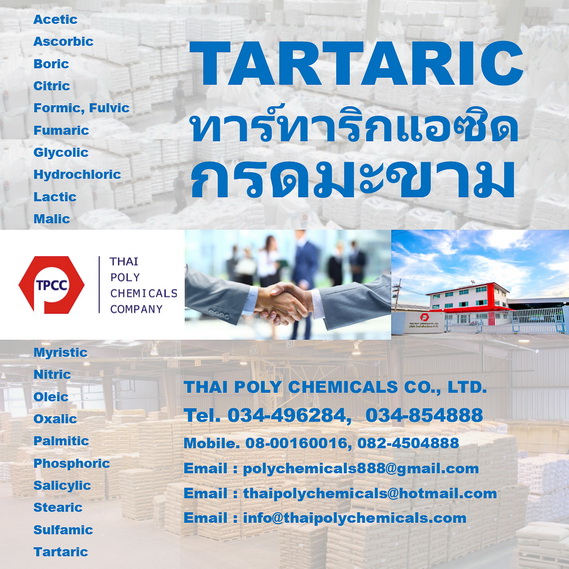
|
[ต้องการขาย] ทาร์ทาริกแอซิด, กรดทาร์ทาริก, ทาทาริก, กรดมะขาม, Tartaric acid, DL-Tartaric ทาร์ทาริกแอซิด, กรดทาร์ทาริก, ทาทาริก, กรดมะขาม, Tartaric acid, DL-Tartaric (สมุทรสาคร) - อุตสาหกรรม เครื่องจักร » วัตถุดิบ วัสดุ เคมีภัณฑ์ 12 ธ.ค. 2560 |
ราคา ไม่ระบุ เข้าชม 865 ครั้ง |
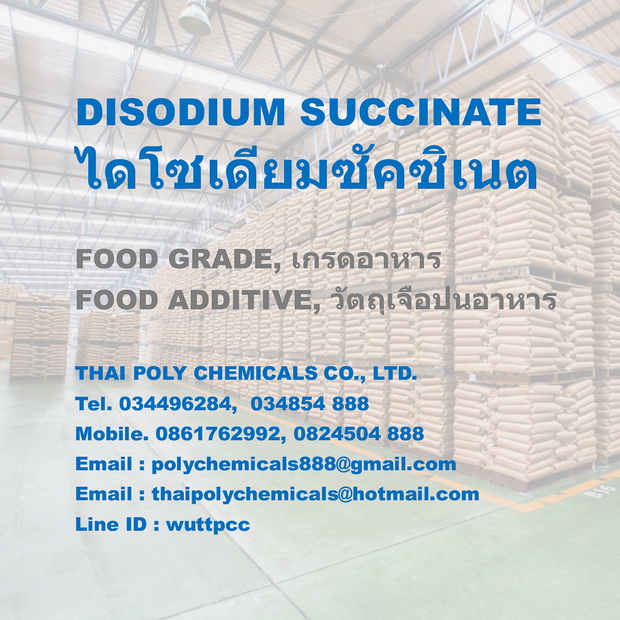
|
[ต้องการขาย] โซเดียมซักซิเนต, ไดโซเดียมซักซิเนต, Sodium Succinate, Disodium Succinate, ซัคซิเนต, ซัคซิเนท โซเดียมซักซิเนต, ไดโซเดียมซักซิเนต, Sodium Succinate, Disodium Succinate, ซัคซิเนต, ซัคซิเนท (สมุทรสาคร) - อุตสาหกรรม เครื่องจักร » วัตถุดิบ วัสดุ เคมีภัณฑ์ 17 มิ.ย. 2561 |
ราคา ไม่ระบุ เข้าชม 312 ครั้ง |
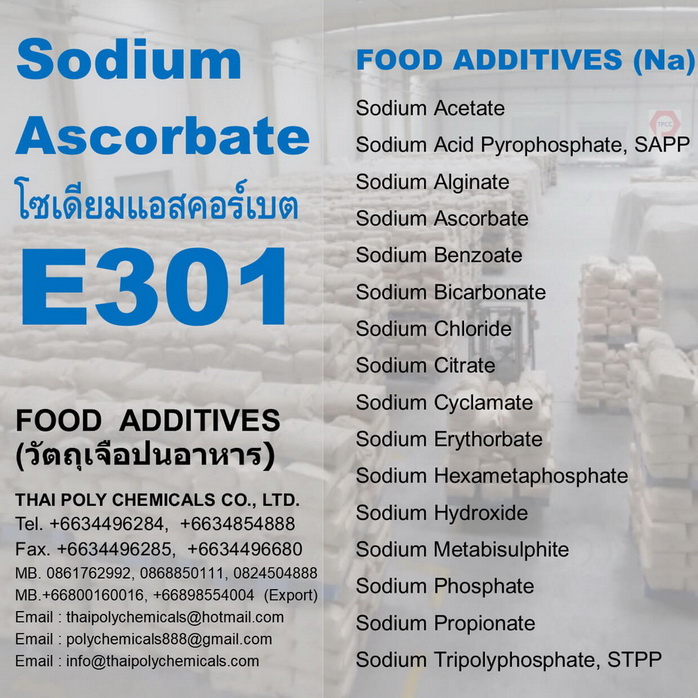
|
[ต้องการขาย] Sodium Ascorbate, โซเดียมแอสคอร์เบต, โซเดียมแอสคอร์เบท, E301, INS301, Ascorbic acid sodium salt Sodium Ascorbate, โซเดียมแอสคอร์เบต, โซเดียมแอสคอร์เบท, E301, INS301, Ascorbic acid sodium salt (สมุทรสาคร) - อุตสาหกรรม เครื่องจักร » วัตถุดิบ วัสดุ เคมีภัณฑ์ 14 ส.ค. 2560 |
ราคา ไม่ระบุ เข้าชม 534 ครั้ง |
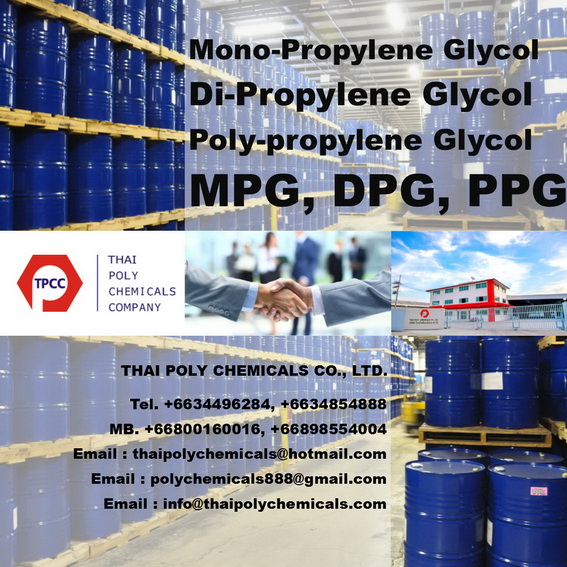
|
MPG USP, Propylene Glycol, โพรพิลีนไกลคอล, โพรไพลีนไกลคอล, โมโนโพรพิลีนไกลคอล, โมโนโพรไพลีนไกลคอล, Monopropylene Glycol (สมุทรสาคร) - อุตสาหกรรม เครื่องจักร » วัตถุดิบ วัสดุ เคมีภัณฑ์ 18 ก.ย. 2560 |
ราคา ไม่ระบุ เข้าชม 370 ครั้ง |
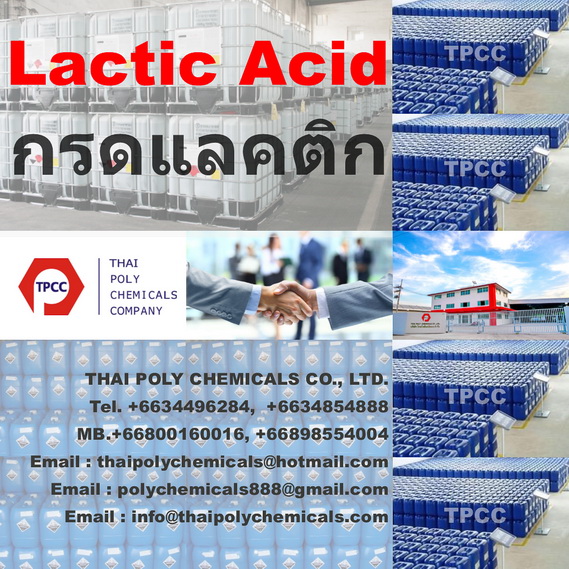
|
[ต้องการขาย] Lactic acid, แลกติกแอซิด, กรดแลกติก, แลกติคแอซิด, กรดแลกติค, 2-Hydroxypropanoic acid Lactic acid, แลกติกแอซิด, กรดแลกติก, แลกติคแอซิด, กรดแลกติค, 2-Hydroxypropanoic acid (สมุทรสาคร) - อุตสาหกรรม เครื่องจักร » วัตถุดิบ วัสดุ เคมีภัณฑ์ 2 ต.ค. 2560 |
ราคา ไม่ระบุ เข้าชม 545 ครั้ง |
